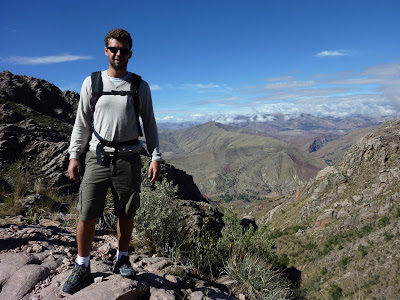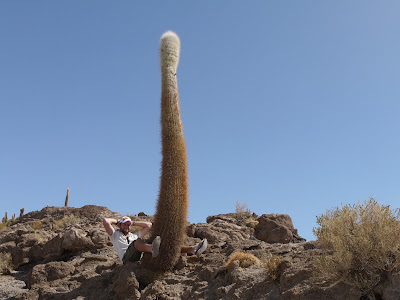After a longer than desired sabbatical from the blogosphere, here we go again. Since my last post on 4th November I spent until the 18th November in Rio. The latter weeks in Rio were not as packed with new experiences as the first two, and somewhat explained my absence. Since then I have not had regular access to the internet, and it is quite ironic that this post comes to you via satellite internet from the Pantanal in Western Brazil, a few hundred miles away from the nearest town. Given the slow connection I will not be posting pictures, although I now have quite the collection, and will add some once I have the opportunity.
The Pantanal
To be more specific, your correspondent sits in a hammock outside of his room in the dark at the working cattle ranch Barra Mansa, where he is the only guest given that it is low season. Marvin Gaye plays on his laptop, while the crickets and frogs sing along melodically. He has just finished his first day in the Pantanal, the world’s largest area of wetlands the size of France, and quite a day it was. Rising at 6am, the day began with a tugboat tour of the Rio Negro River, upon the banks of which the lodge is situated, with Carlos the native guide who speaks no English. The river is teaming with wildlife, from Caiman to Capybara (the world’s largest rodent), to 100s of different bird species and much much more including if you’re lucky the Jaguar, the holy grail of the Pantanal. The ambience, floating down the river, listening to the nature and taking in the tranquillity and remoteness of the surroundings was pretty spellbinding, all four hours of it. Midday lunch was followed by a good nap, and then a three-hour horse ride into the wetlands with Mancho one of the lodge cowboys fitted with jeans, leather chaps and cigarette in mouth – also an unforgettable experience. For this time of year the water level is surprisingly low, around two meters lower than usual. The weather has been dry and the cowboys are waiting for rain to freshen things up a bit, which given the thunderstorm outside seems to be arriving.
The last two weeks in Rio were spent consolidating my love for the city, experiencing a variety of nightlife, and meeting Cariocas while brushing up on my Portuguese, which is making slow progress, but progress nonetheless. Rio offers some very original nights out where emphasis is on dancing, music and fun and less of the big spending bottle spraying (although that can be found) that is more prevalent in Sao Paulo. A night in Casa Rosa (the pink house), previously a brothel at the foot of a favela was a night of particular note. Serving traditional favela food known as Fechoada (meat stew with cowboy beans and rice), and different rooms playing a variety of music, from Samba to Baila Funke to live western rock music, this really was a night to remember.
Unfortunately my last week in Rio did not provide the right wind conditions to finish my kite surfing course – I guess reliance on wind is the sport’s one downside. I managed to get in five hours of kiting and took one lesson in the water with the kite and the board, managing to get up out of the water but abruptly falling back in. Given the strong wind and my small kite of 6 meters, I should be able to get up with a 9-meter kite (bigger kite means more power and greater pull out of the water). Nevertheless, my instructor rose effortlessly out of the water with one fell swoop of the kite, and placing it in the 10 o’clock position cruised away, leaving me bobbing in the water to reflect on my inadequacy. I will finish my course when I’m back in Rio over the New Year period, weather permitting, and will practice what I have learnt in Florianopolis during christmas.
Sao Paulo
I left Rio on the 19th November and spent the weekend in Sao Paulo, staying at Sacha’s apartment (the landlord in Rio), that he generously lent me while he and his roommates spent the weekend in Rio. The apartment was in the Vila Madalena area, a hilly more bohemian and atypical part of the city given its predominance of lower housing. The streets are lined with boutique clothes stores, coffee shops and restaurants, and at night the streets are packed with Paulistas (people from Sao Paulo) frequenting the multitude of bars. Friday evening I had dinner with one of the French roommates before he caught the midnight overnight bus to Rio, before venturing out solo to scope out the bars. Given that I am not a seasoned soloist, I envisioned a beer or two before hitting the sack. The night turned out to be one of the stranger nights of my Brazil experience, meeting a group of inviting Paulistas at a samba bar, dancing, eating at 5am, and then buying a collection of LP records from an old, but evidently well-seasoned salesmen – space in my bag had I not.
Sao Paulo’s allure surprised me having come from the seemingly unsurpassable attraction of Rio. The city certainly offers a different vibe to that of Rio, with a greater air of chic sophistication given its infamous world-class restaurant and club scene. The city is massive, with the metropolitan area home to 20 million people, and the largest population of Japanese outside of Japan at 2 million, hence the city’s reputation for excellent sushi. Monotonous white skyscrapers dominate the city, but near the centre some interesting architecture can be found. Saturday, rising with a kind reminder of the night before, I ventured towards avenida Paulista, the city’s most famous street to check out MASP’s (Museum of Art Sao Paulo) famous art collection, followed by a peruse around Jardims, the city’s ritzy shopping district, and a nice solo dinner that was much needed. Saturday night was comparable to Friday, but the Sunday reminder was not quite as forceful. Sunday I spent at a friend from Penn’s humble abode, and was invited to have lunch with his parents. Having tasted the bar scene on Friday and Saturday, on Sunday I was keen to experience a Sao Paulo club. I met up with a friend, Charles, who had arrived in Sao Paulo after a wedding, and with whom I would spend the next few days with his friends from Tufts Ilana and Alex in Charles’s house in Trancoso.
Trancoso
The 22nd to the 25th were spent in Trancoso in Bahia state with the three Tufts companions. It was nice to be back with familiar company, speaking a familiar language. We flew from Sao Paulo to Porto Seguro (where the Europeans first landed in the New World), and drove two hours south to Trancoso. Bahia state and its much-lauded capital, Salvador which I will visit at a later date, is known for its African influences, particularly in its cooking, music and dancing (Capoeira is practiced a lot), and Bahian natives have a darker skin colour than Cariocas or Paulistas. Charles’s house, is a fifteen minute drive from Trancoso in a beautiful new complex development set on the cliff tops that has attracted buyers from Paulistas and Europeans alike, with French accents as common as the frogs. The drive to Trancoso would take five minutes if it weren’t for the abysmal roads, that resemble something more likely to be seen on Eurosport’s motocross challenge – our Fiat midget performed admirably, although I was glad to have left earlier than the others and therefore not be responsible for its return to Hertz. The claim is that with such pockmarked roads, the large tourist buses cannot reach Trancoso, and therefore its charm is maintained. Charm it has in abundance.
The town itself is situated up on the cliff tops, overlooking some of Brazil’s best beaches (officially top ten in Brazil’s beach bible – yes I keep it in my bedside table and read it every night before going to bed). The centre of town is a car-free zone, and colourful boutique clothing and food stores surround the central grass square that is apparently home to two grazing horses. At the cliff-end of the square is a charming, small, all-white church, while at the town end, a small bar on wheels serving fresh Caipirinhas proudly displays a Bob Marley towel and plays Buffalo Soldier, and the chilled-out, hippy feel of the place is consolidated. But hippy prices these are not, with chic restaurants and shops charging Sao Paulo and London prices.
For the two days spent in Trancoso, one was spent in sunshine on a local beach, and the second we weathered strong rain to drive one hour for lunch on one of Brazil’s most famous beaches, Praia Espelho, and disappoint it did not despite the sun not being out. The first night, we dug deep into our pockets for dinner at a good fish restaurant where we met a group of Paulistas with whom we shared quite a memorable drink at the Bob Marley wheelie-bar afterwards, which included dancing and talking with (as far as I could) an old fisherman maybe in his sixties who was born in Trancoso and had lived there all his life. He told me that for him Trancoso was the capital of the world – and if I’d been smoking what he had, I’d probably have believed him!
Getting from Porto Seguro to the Pantanal was quite a journey that involved a 3am flight, two further connections and a six hour 4WD drive on a dirt road. But all well worth it.
Enough of slapping the mosquitoes while I frantically type this out. Tomorrow morning is another early one, when I will be riding over with Mancho by horse to the neighbouring ranch (by neighbouring that means half an hour car ride and two hours by horse power), where they are hosting a day party with a Churrasco and a tournament involving different games with cowboys and their horses. A standard Sunday for me.
Howdy.
BTW…























































